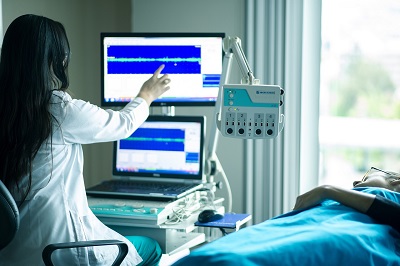The process for registering a Class B medical device with the Health Sciences Authority (HSA) in Singapore involves several key steps. Here’s a detailed overview of the process, from classification to post-market obligations:
Step 1: Classify the Device
Classification is the first step in the process. Ensure that your medical device is correctly classified under Class B according to HSA's guidelines. Class B devices are typically low to moderate risk devices.
- Class A: Low risk
- Class B: Low to moderate risk
- Class C: Moderate to high risk
- Class D: High risk
If you're unsure of your device's classification, consult HSA's classification guidelines or contact HSA directly for advice.
Step 2: Appoint an Authorized Representative (if applicable)
If your company is based outside of Singapore, you must appoint a local Authorized Representative (LAR) in Singapore. The LAR will be responsible for managing the regulatory processes on your behalf.
- The LAR must be registered with HSA and must have the authority to handle regulatory submissions, communicate with HSA, and ensure compliance with Singapore's medical device regulations.
Step 3: Prepare the Required Documentation
Gather all the necessary documents to support your Class B device registration. These documents include:
Product Registration Form: The form to be filled out and submitted online via HSA's Health Products Regulation System (HPRS).
Device Description: Detailed information about the device, including its intended use, features, and components.
Risk Management Report: This report, in line with ISO 14971 (or an equivalent), outlines the identification, assessment, and mitigation of potential risks associated with the device.
Conformity Assessment Documentation: This proves that your device meets relevant safety and performance standards. Commonly accepted certifications include:
- CE Marking (for EU market)
- FDA approval (for US market)
- Or other internationally recognized certifications.
Clinical Evaluation Report: If applicable, this report shows the clinical data supporting the safety and performance of the device.
Quality Management System (QMS) Certification: For example, ISO 13485 certification demonstrates that your manufacturing processes comply with international quality management standards.
Free Sale Certificate: Issued by the regulatory authority in the country where the device is marketed. It confirms that the device is legally available for sale in that jurisdiction.
Labeling and Instructions for Use (IFU): These must comply with HSA’s regulations, which include specific requirements for labeling and the information that must be included in the IFU.
Other Supporting Documents: Additional documents may be required depending on the specifics of the device (e.g., test reports, performance data).
Step 4: Submit the Application
- HPRS Submission: You must submit your application through the Health Products Regulation System (HPRS), an online portal provided by HSA.
- Create an Account: If you don’t already have an account with HPRS, you’ll need to create one.
- Complete the Application Form: Fill out the required details in the online form for Class B medical device registration.
- Upload Supporting Documents: Upload all the necessary documents, including product descriptions, risk assessments, conformity certificates, and other supporting materials.
- Pay the Registration Fee: Pay the applicable registration fee for your Class B device. The fee schedule can be found on HSA's website.
Step 5: HSA Evaluation
Once your application is submitted, HSA will evaluate your Class B device’s application. The evaluation process includes:
- Document Review: HSA reviews the submitted documentation to ensure that all regulatory requirements are met, including compliance with international standards.
- Technical Evaluation: This may involve checking the device’s safety and performance data, risk management processes, and clinical evaluations (if applicable).
- Inspection (if necessary): In some cases, HSA may require an inspection of the manufacturing facility or request additional information.
Timeline: The review process typically takes 1 to 3 months for Class B devices. The timeline may vary depending on the complexity of the device and the completeness of the application.
Step 6: Receive Registration Approval
If HSA is satisfied with the application and documentation, they will issue a Certificate of Registration for the Class B medical device. This certificate confirms that the device is authorized to be marketed and sold in Singapore.
Step 7: Post-Market Obligations
After your device is registered, you must comply with HSA’s post-market surveillance requirements, which include:
Adverse Event Reporting: You must report any adverse events or product defects related to your device.
Periodic Updates: You may be required to submit periodic updates to HSA, such as changes in the device's risk profile, manufacturing processes, or clinical data.
Device Recall (if necessary): In the event of a safety concern or regulatory issue, you may need to initiate a recall of the device.
Market Surveillance: HSA monitors the safety and performance of medical devices on the market. You must cooperate with any inspections or requests from HSA.
Step 8: Maintain Compliance
- Renewal of Registration: Depending on the device type and regulatory requirements, you may need to renew the registration periodically.
- Changes to the Device: If there are significant changes to the device (e.g., modifications in design, manufacturing, or intended use), you will need to inform HSA and may need to submit a new registration application.
Key Considerations
- Risk Classification: Ensure that your device is correctly classified under Class B. Misclassification could delay the approval process or require additional documentation.
- International Certifications: Devices that already have international certifications (e.g., CE, FDA) can streamline the approval process in Singapore.
- Labeling and Instructions: Make sure your labeling complies with HSA’s requirements, which may include specific symbols and regulatory information.
- Timely Submission: Ensure that all required documents are complete and accurate before submission to avoid delays in the evaluation process.
Fees and Timeline
- Fees: Class B medical device registration typically incurs moderate fees. Refer to HSA’s official website for the exact fee schedule.
- Timeline: The registration process for Class B devices generally takes 1 to 3 months, depending on the complexity of the device and completeness of the application.
.png)
.jpg)

.png)

.png)